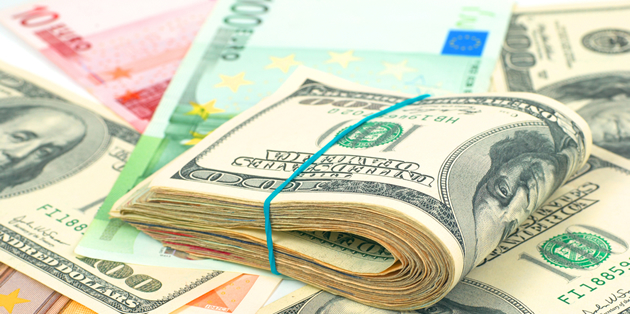- Pound remained under pressure as consumer confidence plunged – Brexit uncertainty continued to weigh on outlook
- Eurozone inflation and GDP strengthened – Single currency bolstered against rivals as currency union demonstrated robustness
- US Dollar slumped in response to disappointing GDP – Growth failed to accelerate as far as forecast to highlight doubt in domestic economy
- GBP exchange rates predicted to weaken ahead of BoE policy meeting – Markets pricing in high odds of August interest rate cut
On Friday the Pound remained under pressure thanks to weakening domestic sentiment, while the US Dollar slumped sharply in response to a disappointing second quarter GDP report.
Both GBP/USD and GBP/EUR exchange rates were also feeling the pressure ahead of Thursday’s Bank of England (BoE) interest rate decision.
Pound Bearish as UK Consumer Confidence Continued to Weaken in Wake of Brexit Vote
Bearishness continued to plague the Pound (GBP) ahead of the weekend, with Brexit-based uncertainty still dominating the outlook of the domestic economy. The GfK Consumer Confidence Index for July plunged from -1 to -12, the single largest drop in monthly sentiment for twenty-six years. While consumer credit was found to have unexpectedly increased in June this failed to rally Sterling for long, with markets largely resigned to the fact that this strength was likely reversed in the wake of the referendum result. A larger-than-expected dip in mortgage approvals on the month in June also added downside pressure to the Pound, offering investors little cause for optimism in the softened currency.
The appeal of Sterling is unlikely to particularly pick up in the coming week, with the finalised raft of UK PMIs expected to confirm the discouraging picture painted by the flash results. Construction is also likely to evidence a contraction in response to the shock Brexit vote, which could add further incentive for the Bank of England (BoE) to consider cutting interest rates at its August meeting. Markets widely anticipate that policymakers will announce fresh easing measures on Thursday, a prospect that is expected to keep the Pound on a weaker footing throughout the week.
GBP EUR Exchange Rate Weakened by Bullish Eurozone GDP and Inflation Data
Confidence in the Eurozone economy, on the other hand, improved markedly on Friday. Despite some market jitters over the outcome of the stress tests involving Italy’s banking sector the mood towards the Euro (EUR) was generally positive. In large part this was thanks to a raft of better-than-expected domestic data, including the second quarter GDP and July Consumer Price Index results. Investors were particularly pleased to see that inflationary pressure within the currency union had picked up from 0.1% to 0.2% in July, an improvement that should offer encouragement to the European Central Bank (ECB).
The reaction to the Eurozone Manufacturing PMIs is likely to be relatively muted, with investors not expecting to see any particular change between the preliminary and finalised figures. However, if US data continues to demonstrate weakness then the Euro is expected to benefit strongly, due to the negative correlation of the EUR USD exchange rate. Tuesday’s Eurozone Producer Price Index data could provoke greater volatility for the single currency, unless the results point towards a stronger inflationary outlook.
US Dollar (USD) Exchange Rate Slumped in Response to Disappointing Second Quarter GDP
With investors still discouraged by the less-than-hawkish tone of the latest Federal Reserve policy meeting the ‘Greenback’ (USD) was dented sharply ahead of the weekend as a raft of ecostats failed to live up to forecasts. Particularly concerning to markets was the far weaker-than-expected second quarter GDP result, which clocked in at just 1.2% as opposed to the 2.6% that had been anticipated. This indicated that the world’s largest economy was not in such a robust state as previously thought, especially as it was accompanied by a downward revision of the first quarter figure. The US Dollar slumped across the board as a result, with the odds of a 2016 Fed rate hike seeming diminished.
As James Smith, economist at ING, noted:
‘The Federal Reserve Open Markets Committee has got its eye firmly on “global economic and financial developments”, which we think refers to uncertainty following Brexit and forthcoming political developments in the US and Europe. Thus, whilst the domestic economic picture may be sufficiently strong for another hike, the Fed will likely maintain its current cautious (although broadly positive) stance in September and ahead of the US Presidential Election in November.’
Even so, a more reassuring performance from the ISM Manufacturing Index on Monday could shore up the US Dollar. Signs have been relatively mixed from the manufacturing sector in recent months, with any evidence of further weakness likely to add further downside pressure to the ‘Greenback’. On the other hand, the safe-haven currency could find a rallying point if the latest Chinese data provokes fresh market volatility amidst slowdown fears.



